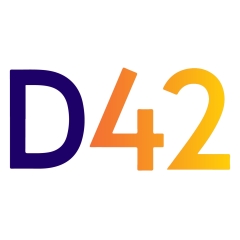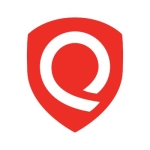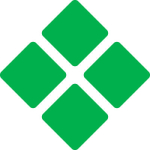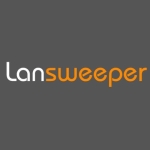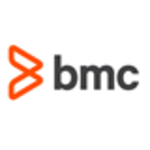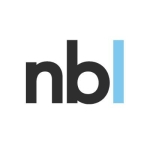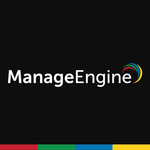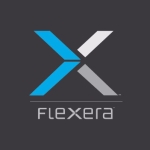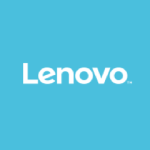What is our primary use case?
Our primary use case is to track all of our IT information in one spot. So instead of using spreadsheets and other tools, it's consolidated here for us.
How has it helped my organization?
We had all the information in a mix of spreadsheets, homegrown applications, and databases, and then we moved it all into Device42. For example, we had one system that was tracking our device inventory, and we had spreadsheets for IP address allocations, while password management was completely separate. This solution really enabled us to lump everything together in one place.
Having the ability to see how things are connected and keeping track of, for example, which server, and which ports on the servers are plugged into which network switches is very helpful when we're looking at network troubleshooting, and we want to do things like mirror ports and mirror traffic. Tracking which MAC addresses belong to which devices is also linked in there.
The topology view enables us to show how our applications interact with each other and with the rack elevation we can see the equipment in each individual rack and which power outlets they're plugged into. That has also been really handy in a few cases.
It definitely saves us time, but I don't know how to quantify it because we've been using it for such a long time. I don't remember what kind of time it took to track down information in the past. Right now, it's super-simple to find whatever we're looking for. I would imagine it saves us a few hours each week.
What is most valuable?
Just having this solution at all has been really solid for us. If I had to pick one part of it, it would be a toss-up between the IP address tracking and the password management. I'm not sure which one of those I'd rank higher.
We have a lot of different devices and some of them have many IP addresses, so keeping track of which ones are assigned where is very critical for putting new devices on the network and giving them new addresses. All of our devices are statically assigned, so if we don't keep good records then we could accidentally assign a duplicate, which would cause problems on the network.
As far as password management goes, before we had this we didn't have anything. We had shared passwords, which is always a horrible idea. Now we have the ability to know who has accessed a password, who's looked at it, and when it's been used or when it's been changed. That's helped us from a security standpoint.
In addition, the solution has some very good relational capabilities that show us how certain devices relate to each other and how some of our environment actually works together.
It also helps us track equipment replacement to know when we have swapped out parts and how much money we've spent on a particular server over its lifetime. We try to utilize all the pieces of it that we currently license.
We use it to track our servers, storage, switches, firewalls, and most recently we started putting our desktops and laptops in it too.
What needs improvement?
One thing I have brought up with their product team, and we opened up a case and a feature request for it, is having a requisition-style system in the software. Right now it does have the ability to track purchases, which is okay. But I would like the ability to create a request and say, for example, I want a new server.
The way that it works right now is that you have to create the server object before you can assign it to an actual purchase. Obviously you won't have the server until you've bought it, so it's something of a cart-before-the-horse scenario where, in order for me to create a purchase, I already have to have the device, which doesn't make sense. It's fine if you're entering the data after the fact, but I would hope to use the system in a pre-purchase scenario, where I or one of my technicians could log into the system, create the request, and then forward that request to my purchasing people or to our ERP.
The other area where it causes us a little bit of a hassle is if I want to track the cost of spare parts. Recently I had to order about a dozen hard drives for servers. For me to use Device42, I had to wait until the drives came in so that I could create the drives and assign the serial numbers to them, and then assign a cost to each drive. A better scenario would be where I'd say, "Hey, I'm buying 12 drives," and be able to have 12 generic drives in the system without serial numbers. Then, once the drives came in we could assign serial numbers and then further assign drives to servers as we need to.
I worked with their product team at least a couple of years ago to express that concern. They claimed to like the idea, but I haven't seen it implemented yet. I don't know if it will ever make the cut. And I would like it not to be a paid upgrade feature. If they could include it with the license we use, that would be extra nice.
For how long have I used the solution?
I have been using Device42 for at least five years, if not longer.
What do I think about the stability of the solution?
It's been very reliable. We had a case last year when it was unavailable because I failed to pay attention to the warnings about our license expiring. That temporarily caused us a glitch because I didn't have our subscription renewed on time. But that was entirely on me.
What do I think about the scalability of the solution?
I would assume it would be fine for all of our future needs. But we're a relatively small organization, so I don't think we're ever going to really stress it.
How are customer service and technical support?
Tech support has generally been pretty good. Over the years there have only been one or two cases that maybe took a little bit longer than I thought was reasonable. Other than that, they've generally been very attentive and responsive. There have been no major hiccups with any of their support.
I've never had to escalate. The few times that I've had to talk to support, whoever I've talked to initially has been able to get things addressed for me.
Which solution did I use previously and why did I switch?
We were using spreadsheets and we had a couple of homegrown databases. We weren't using any commercial product prior to a Device42.
We came across the solution because we needed to find a better way to do keep track of all the data. We did some Google searches at the time to see what other people were out there doing. I'm also part of a few different online communities, and I'm sure I asked around those, at the time, if anybody had thoughts or suggestions.
How was the initial setup?
The initial setup was very easy. It was restoring a virtual machine image. It gets delivered as a virtual disk file. Spin it up on your choice of hypervisor and it's ready to go instantly. For us it was ready to go, full-production. I'm sure there are some scenarios where it could get a little bit more complicated, but ours has always been very simple. It was deployed as a virtual machine. We didn't have any wrinkles.
Even with version upgrades that have had breaking changes — and that we had to do backups and restores for — even that hasn't been that terribly difficult. I just I told the people that use it, "Hey, we're going to be down for about 20 minutes," and ran the upgrade and everything was good.
In terms of a learning curve, it's relatively straightforward. There are a few things here and there that, when you come across them, seem a little bit backward. I can't remember specifically what those issues are, other than the purchasing one I mentioned. But it's mostly straightforward, mostly easy to use.
What about the implementation team?
What was our ROI?
There is a value to it.
The part that makes some of the solution's add-ons a little bit harder for me to justify and get approved is that I don't have any mechanism to show how much they could possibly save us, or what we're currently doing on a day-to-day basis that they would somehow help us with. Maybe if they had some kind of ROI calculator or, "Here's what you could be doing if you added on some of these extra features," that might help.
What's my experience with pricing, setup cost, and licensing?
Their pricing model is very poor. For instance, software licensing, at one point in the distant past, was a standard feature. At some point they broke it out as a separate, paid license upgrade. That was kind of rotten.
Right now I'm looking at my license page and all of the add-ons are disabled because we didn't pay for any of them. The solution is helpful and it is useful, but it makes adding on any of the extra applications or any of the extra components cost-prohibitive, for us at least.
Which other solutions did I evaluate?
We've looked at a few different products. One of them was called Sunbird and there was something by HPE that we might have looked at a long time ago.
Sunbird did not have a full web interface for the solution, so you had to have desktop software. Quite honestly, I wasn't interested in desktop software. I wanted something that I could hit with either my computer or my tablet, or even my phone for that matter, and still be able to get at our information.
What other advice do I have?
It's all pretty easy to use and you'll get out of it what you put into it. We try to make sure our information is accurate and up to date and we periodically do audit against the information to make sure it is current. The biggest advice I would give is to make sure you don't let your data get stale.
Documentation is important. We've had internal problems where we've lost a hypervisor or our network has gone down and we haven't had access to it. Those scenarios have proven that we rely on the info and we need it. So having some kind of high-availability solution would be good for us at some point. We do have a standby server that takes backups of our data and sends it to a separate Device42 instance, but I have not experienced trying to fail over and make it active.
Maintenance of the tool does not even require one person. It's just something that runs in the background and it doesn't take any extra effort, other than what we normally do with our virtual machines and hypervisors. We treat it the same as any other server that we manage. Because it's deployed as a virtual appliance, we count on Device42 to have things hardened and patched. I'm not sure if their normal software upgrades include any system-level patches, but it's nothing that we manage or maintain.
There are five people using it across our organization. I use it in my role as IT manager. The others are server admins, a desktop admin, and a couple of people who have access to it to retrieve asset information.
We're subscribed to just the core product and we utilize pretty much every bit of it. It would be great if we could get into some of the other stuff, like the application discovery and the application mapping; software license management would be sweet, and power and environmental monitoring would be nice too. But those features are all paid add-ons. Right now, the biggest challenge for us is what we currently pay with our base licensing. It's reasonable in terms of the world. We've looked at competitive products in the past and either the other products weren't as well polished and as well put together as Device42, or they were just completely out of our reach in terms of price.
It has generally been a really solid and useful tool. It would be cool if they could get around to getting that purchasing aspect worked in. Other than that, it's been solid. It's done what we've needed it to do so far.
Which deployment model are you using for this solution?
On-premises
Disclosure: PeerSpot contacted the reviewer to collect the review and to validate authenticity. The reviewer was referred by the vendor, but the review is not subject to editing or approval by the vendor.

